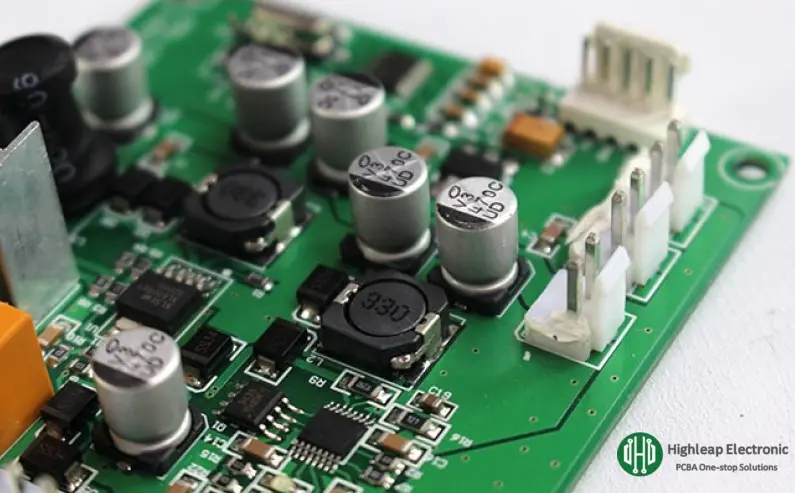Back to blog
PCB IPC Class 2 VS Class 3 Standards
IPC Class 3 Standards
What is IPC Class 3 Standards
IPC Class 3 standards represent the highest level of quality and reliability for PCBs. They are designated for high-performance electronic products that require uninterrupted service and extended life. The standards are stringent, with a focus on ensuring the reliability and functionality of PCBs under extreme conditions.
IPC Class 3 Standards Applications
These standards are typically applied in critical systems where failure is not an option. Common applications include medical devices, military and aerospace electronics, and other high-reliability equipment where consistent performance and extended life are imperative. In these sectors, the cost of failure can be exceedingly high, both in terms of financial impact and human safety.
IPC Class 3 Standards Requirements
Class 3 standards demand more precise manufacturing controls and tighter tolerances. They require rigorous inspection and testing to ensure that each aspect of the PCB adheres to the highest quality. For instance, there is less allowance for variations in aspects like solder joints, hole wall quality, and component alignment compared to Class 2.
Despite the higher initial costs, Class 3 PCBs can be more cost-effective in the long run for critical applications. The reliability and durability they offer reduce the need for frequent replacements or repairs, which can be costly and risky in critical systems.
Quality vs. Cost
While IPC Class 3 standards ensure the highest level of PCB reliability, this comes at a higher manufacturing cost. The rigorous requirements necessitate advanced manufacturing techniques, thorough testing, and higher-grade materials, all of which contribute to increased production costs.
Class 2 vs Class 3
Quality and Reliability
The primary distinction between IPC Class 2 and Class 3 standards lies in their quality and reliability levels. Class 3 standards are more stringent, demanding higher precision in manufacturing and ensuring the utmost reliability. In contrast, Class 2 standards, while still maintaining good quality, allow for greater leniency in manufacturing tolerances.
Manufacturing Complexity and Cost Implications
Class 3 PCBs require more sophisticated manufacturing processes, stricter quality control, and comprehensive testing, which translates to higher production costs. Class 2 PCBs, being less stringent, are generally more cost-effective to produce, making them suitable for mass-market electronics where price sensitivity is a significant factor.
Application Suitability
The choice between Class 2 and Class 3 depends heavily on the application. Class 3 is preferred for critical systems, such as life-saving medical devices or military equipment, where failure can have dire consequences. Class 2 is typically sufficient for general consumer electronics, where occasional failures are less critical.
Durability and Long-Term Performance
Class 3 PCBs are designed to last longer and perform reliably under extreme conditions, making them ideal for high-reliability sectors. Class 2 PCBs, while reliable, may not possess the same level of durability and long-term performance, especially under harsh conditions.
Decision-Making for Manufacturers and Designers
Manufacturers and designers must weigh the requirements of the end application against the cost implications. For high-reliability needs, the investment in Class 3 standards is justified, but for less critical applications, Class 2 provides a balance of quality and cost-efficiency.
Choosing the Right Class for Your Needs
Assessing the Application Requirements
The nature of the final product’s application is the most critical factor. For electronics in life-critical systems, military, aerospace, or high-end medical devices where failure is not an option, Class 3 is the clear choice. For consumer electronics, home appliances, or less critical commercial products, Class 2 usually suffices.
Understanding the Cost Implications
Budget constraints cannot be overlooked. Class 3 manufacturing is more expensive due to its stringent quality requirements. If the budget is a major concern and the application does not demand extreme reliability, Class 2 might be the more economical choice.
Considering the Operating Environment
The environment in which the PCB will operate is another vital consideration. For harsh environments with extreme temperatures, vibrations, or moisture, Class 3 provides the necessary robustness. In contrast, for controlled environments with lesser demands, Class 2 is adequate.
Evaluating Long-Term Reliability and Maintenance
Think about the long-term implications. While Class 3 PCBs might be more expensive upfront, they could be more cost-effective in the long run due to their durability and lower maintenance needs. For products with shorter life spans or where regular upgrades are anticipated, Class 2 might be more appropriate.
Compliance with Industry Standards
Certain industries have specific requirements or standards that might necessitate the use of Class 3 PCBs. It’s important to be aware of these industry-specific regulations when making your decision.
PCB & PCBA quick quote
Related Articles

5 Ways and Benefits of Determining LED Polarity
Simple schematic diagram of LED polarity judgmentProper placement, labeling, and orientation of components on a Printed Circuit Board (PCB) help reduce common issues such as short-circuiting and other electrical problems. Ensuring correct orientation of components,...

Comprehensive Guide to Electronic HS Codes for PCBA
Export PCBAIn the realm of international trade, HS Codes (Harmonized System codes) are crucial for the classification and categorization of goods. Developed by the World Customs Organization (WCO), these numerical codes provide a standardized method for customs...

Chinese Chips: A Comprehensive Guide for Tech Enthusiasts
Chinese ChipsIn recent years, China's semiconductor industry has experienced a significant transformation, establishing itself as a major player in the global chip market. With advancements in technology and substantial investments in research and development, Chinese...
Take a Quick Quote
